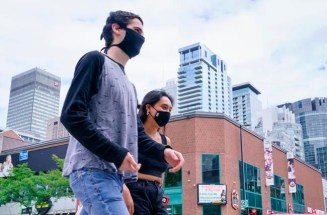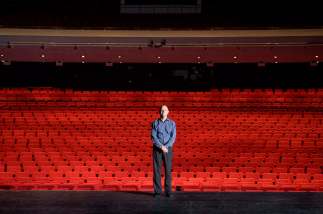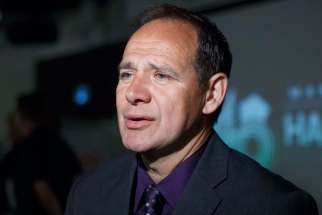Best laid plans As pandemic rages, performers, venue managers face tough task determining performance possibilities
Read this article for free:
or
Already have an account? Log in here »
To continue reading, please subscribe:
Monthly Digital Subscription
$0 for the first 4 weeks*
- Enjoy unlimited reading on winnipegfreepress.com
- Read the E-Edition, our digital replica newspaper
- Access News Break, our award-winning app
- Play interactive puzzles
*No charge for 4 weeks then price increases to the regular rate of $19.00 plus GST every four weeks. Offer available to new and qualified returning subscribers only. Cancel any time.
Monthly Digital Subscription
$4.75/week*
- Enjoy unlimited reading on winnipegfreepress.com
- Read the E-Edition, our digital replica newspaper
- Access News Break, our award-winning app
- Play interactive puzzles
*Billed as $19 plus GST every four weeks. Cancel any time.
To continue reading, please subscribe:
Add Free Press access to your Brandon Sun subscription for only an additional
$1 for the first 4 weeks*
*Your next subscription payment will increase by $1.00 and you will be charged $16.99 plus GST for four weeks. After four weeks, your payment will increase to $23.99 plus GST every four weeks.
Read unlimited articles for free today:
or
Already have an account? Log in here »
Hey there, time traveller!
This article was published 04/09/2020 (1933 days ago), so information in it may no longer be current.
In 2020, planning for the fall arts season is like making a sand castle in a hurricane.
Intentions and results are very different things in the age of COVID-19, especially in Manitoba, where our once enviable low infection rate has given way to one of the worst in the country in terms of active cases by per cent of the population.
Theatre
Across the arts spectrum, nothing is set in stone — certainly not in the realm of live theatre, which is seemingly still in flux, even after all the major theatre companies radically adjusted their seasons in the wake of the March lockdown.
On its website, the Manitoba Theatre for Young People appears to be going ahead with its six-play season. But artistic director Pablo Felices-Luna can’t discuss the season until mid-September.
Winnipeg Jewish Theatre is also maintaining its more compact schedule of plays, including the return of Becoming Dr. Ruth starring Mariam Bernstein (Jan. 28-Feb. 7), Anna Ziegler’s Actually (March 6-14) and the world première of Daniel Thau-Eleff’s Narrow Bridge (April 29-May 9).
“At the moment, it might be a hybrid of people in the audience and streaming from home so I’m not sure yet,” says WJT’s artistic director Ari Weinberg. “I’m hoping that by October, we have a better idea. But for now the plan is we want to welcome people back if we can.”
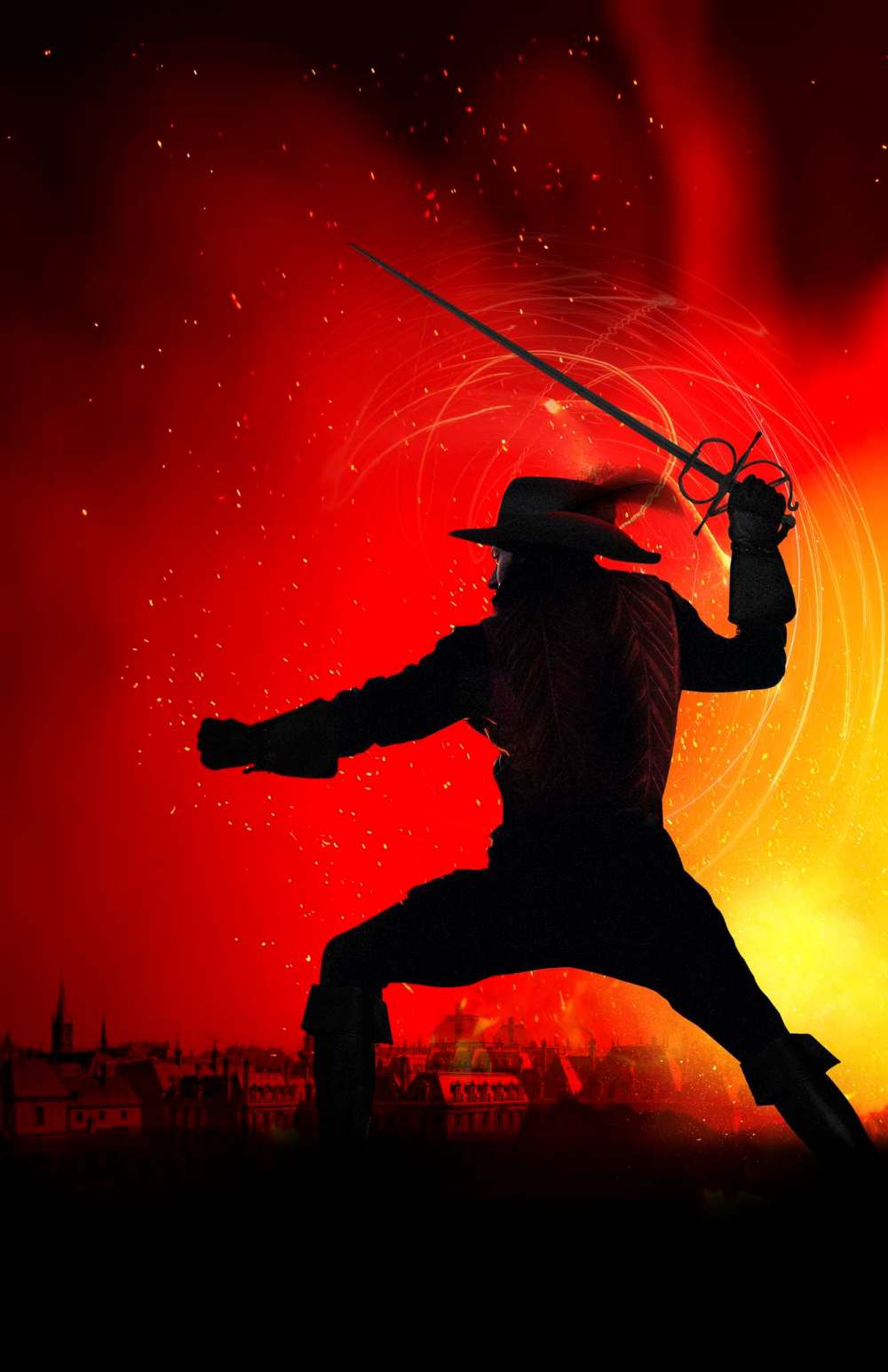
Over at the Royal Manitoba Theatre Centre, five shows are still on the calendar: The Legend of Georgia McBride, Yaga, Calpurnia, The Wolves and The Three Musketeers. But artistic director Kelly Thornton teases a reconsideration in a prepared statement to the Free Press, acknowledging some possible tweaks, though the first show, Georgia McBride, is not scheduled until mid-February.
“We remain hopeful about returning to full productions in the winter, but realistic that things may evolve,” Thornton says.
“As we continue to assess the situation, we will share a larger update on our Season 2.0 programming by Thanksgiving,” she says, adding: “We’re also developing exciting microprogramming plans for the fall to engage and inspire our audiences in innovative ways to experience theatre.”
At Prairie Theatre Exchange, it feels like a gift to be working on a new show, says artistic director Thomas Morgan Jones, even if that show — Yvette Nolan’s Katharsis — will be about 15 minutes long and will only be viewable free online from Oct. 5 to 11.
“It’s amazing to be collaborating with artists working on a play,” Jones says in a phone interview. “We had our first physically distanced production staff meeting in our theatre, everyone in masks. On Tuesday, we start rehearsals.”
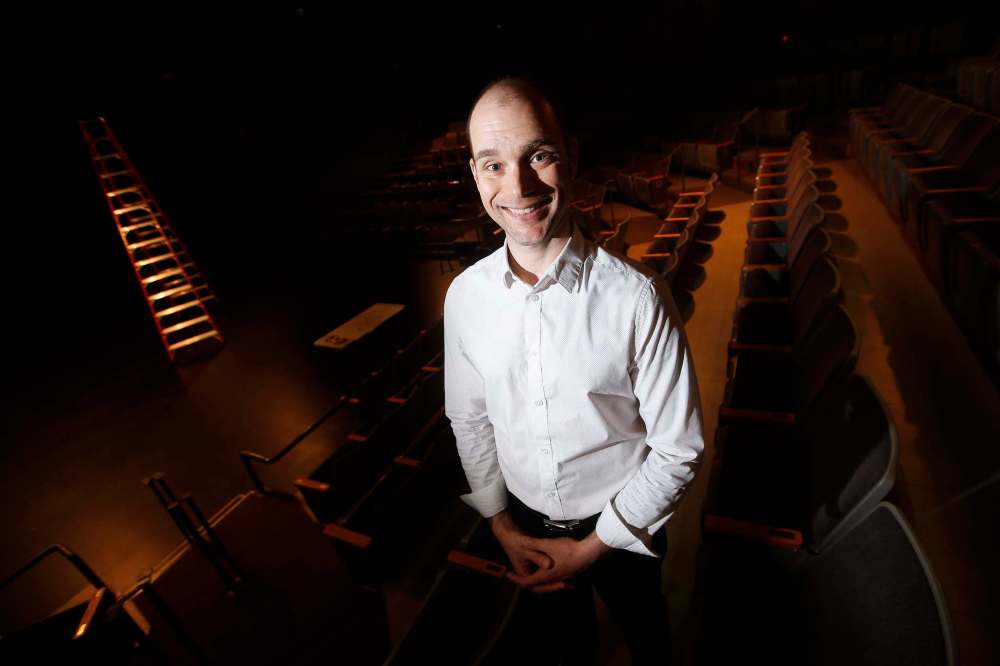
Commissioned by PTE to address the pandemic and its impact on theatre, Katharsis “is a way of marking this time,” Jones says. “You could call the play a ceremony in many ways.
“It’s a really great project because there are so few people involved in it and it gives us a real opportunity to roll out those protocols, to figure out what works and what can be improved and how everyone’s comfort level is.”
As for PTE’s program of three stage offerings — including Hannah Moscovitch’s Post-Democracy (March 10-28), Outside Joke: The Improvised Musical (April 14-May 2) and radio host Ismaila Alfa’s yet-untitled new play (May 19-June 6), the plan is to go ahead with reduced attendance.
— Randall King
Community arts groups
Community arts groups have been grappling with the same existential questions as their professional counterparts over the last six months. Some are embracing online programming and others are wondering when the show will be allowed to go on.
“(It’s) dead,” says Anthony Ducharme of the present state of community theatre in the province. “The majority of us have done nothing.”
Ducharme is president of the Association of Community Theatres (ACT) of Manitoba, which represents 10 non-professional troupes across the province, and a performer and stage technician with Gimli’s A-Spire Players. His group was preparing for its spring play when the first local case of COVID-19 was reported back in March.
“We ceased all rehearsals,” Ducharme says. “When you look at the average age of the person in the audience, they’re in their senior years and that was identified as a high-risk group… that was part of our decision-making when we shut the performances down.”
“Now we’re planning for 2021… we don’t even know whether we’re going to run (the event) next year.”–Anthony Ducharme
A-Spire also cancelled its summer festival, which hosts plays at a local church every weekend from June to August, and ACT Manitoba put the kibosh on its 41st annual ACTFest, an adjudicated event scheduled to run in May.
“Now we’re planning for 2021… we don’t even know whether we’re going to run it next year.”
As a player, Ducharme is missing the process of rehearsing and camaraderie with his fellow actors. As a community theatre leader, he’s been meeting with his board virtually to brainstorm ways to present work safely for actors and the audience.
“When you look at history and you look at performers, they’ve always been in the forefront with the ideas of how to do things in the worst of times,” he says.
● ● ●
It’s been a quiet summer for the local choir community.
From the outset, public health orders deemed singing a high-risk activity for virus transmission, but the Manitoba Choral Association is hoping the government will change its tune.
“There are steps that you can take to mitigate the spread of the virus, like wearing masks and limiting your time and your rehearsal space, making sure you have good ventilation,” says executive director Jenny Steinke-Magnus.
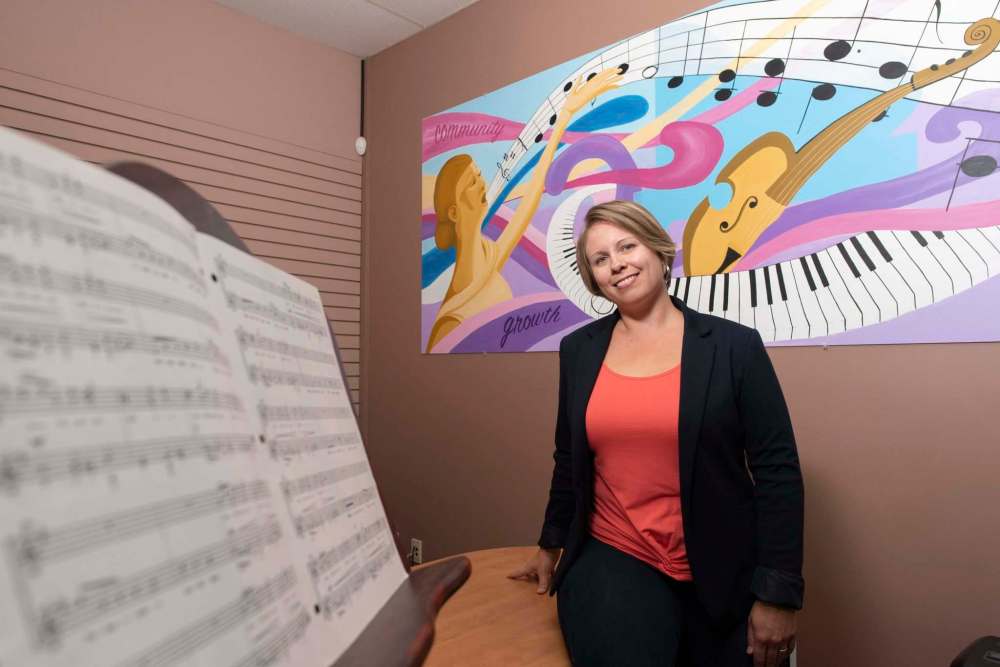
The MCA represents nearly 200 school, community and church choirs across the province — all of which have had to cancel their 2020 seasons amid the pandemic. The organization recently pulled the plug on two of its flagship events: ChoralFest, a two-week adjudicated event set to take place in November; and Provincial Honour Choirs, scheduled for February.
“We know that many of our members are very disappointed,” Steinke-Magnus says. “We are going to be trying to replace them, but you can’t really replicate those experiences online.”
For one, choir is all about people singing together, and also, video chat platforms aren’t exactly conducive to choir rehearsals.
“The technology hasn’t quite advanced enough to reduce the lag time,” Steinke-Magnus says. “(And) that social aspect is really, really important for people… yes, you can see each other and talk to each other, but it’s just not the same as singing together.”
To fill the programming gap, the MCA is planning a series of online choral-related webinars and workshops.
The Manitoba Society of Artists has fully embraced virtual programming this fall for its 88th annual Open Juried Competition and Exhibition (OJCE). The show usually receives about 250 entries from emerging and established visual artists with 70 or so jury-selected pieces displayed at a local gallery during a two-month exhibit. This year, the show is moving entirely online.
“We looked at the logistics of it and it was just too many people handling too much stuff without enough time in between,” says OJCE chairwoman Bonnie Taylor.
“Art is very tactile… there are losses in terms of dealing with an image that’s online, you don’t get to see the size of the work… and there’s a loss of texture.”
There are pros and cons to a virtual art exhibit. In the pro column, the society can provide more exposure for more artists without having to worry about the physical constraints of a gallery space. A long list showcasing every artist submission will be posted online from September to October and a short list of jury selections and prize winners will be featured until Dec. 31.
Adversely, technology is expected to be a barrier for some artists — although the society has enlisted tech-savvy volunteers to help out — and viewing art online leaves something to be desired.
“I haven’t heard anybody say, ‘I prefer this to a physical show,’” Taylor says. “Art is very tactile… there are losses in terms of dealing with an image that’s online, you don’t get to see the size of the work… and there’s a loss of texture.”
While she’s certain the local art world will persevere, Taylor looks forward to a future that includes in-person exhibits.
“I will be glad when the art galleries are wide open.”
— Eva Wasney
Music venues
The Centennial Concert Hall will be the biggest entertainment venue opening its doors to audiences this fall when it hosts the Winnipeg Symphony Orchestra’s season-opening concerts Oct. 2 and 3.
They expect a sellout… or at least all the available tickets to be sold. Provincial government restrictions on public gatherings to prevent the spread of COVID-19 mean only 500 of the auditorium’s 2,305 seats — about 21 per cent of its normal capacity — can be used for each show.
“It’ll all have to be planned out seating-wise so that we have the right amount of space between each group,” says Martin Kull, the concert hall’s general manager. “It’ll be a little more costly because of staffing and everything else, but we’re in a position where we’re going to do whatever we have to do to get things somewhat back to normal.
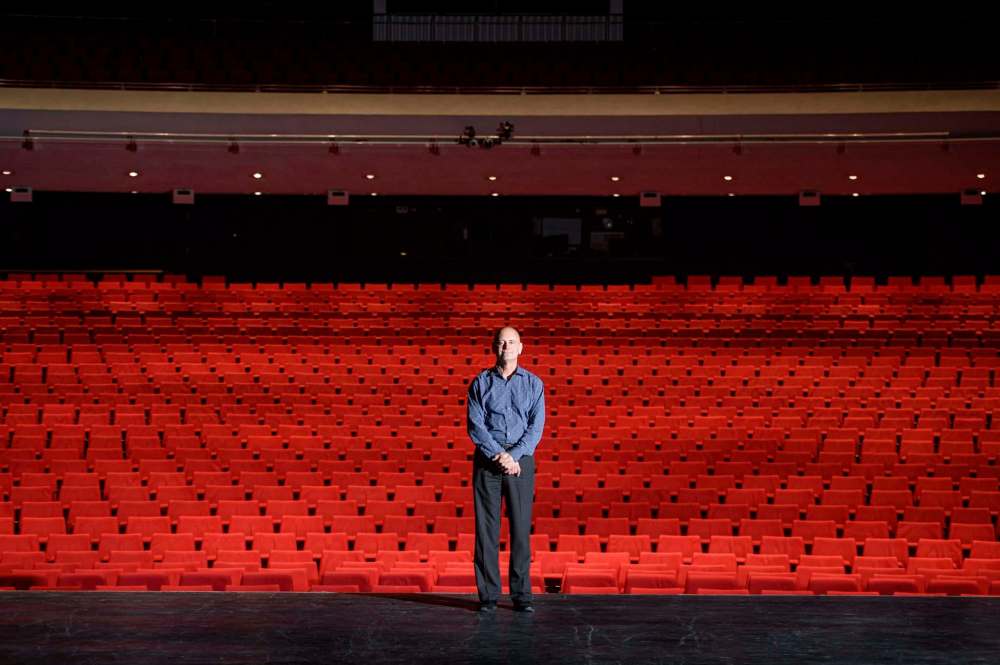
The Manitoba Centennial Centre Corp., which oversees many key city arts buildings, including the concert hall and the adjacent Manitoba Museum and Planetarium, has spent about $10,000 on state-of-the-art sanitizing equipment in use at both buildings.
The concert hall is also preparing for the Royal Winnipeg Ballet’s annual holiday production of Nutcracker.
Meanwhile, those who operate and own the city’s smaller venues have found the summer to be a mixed bag: relief that some crowds are back enjoying bands again, paired with tougher economic times, owing to restrictions on public gatherings, which have cut into revenue.
Audiences have adapted to the pandemic guidelines, which mean remaining seated during concerts, waiting for a server to deliver drinks instead of walking to the bar and definitely no dancing.
The new normal for 2020 also means no intermissions, to prevent people from mingling together, which, along with cautious patrons, has affected the bottom line, says Erick Casselman of the Park Theatre on Osborne Street.
A typical arrangement at the Park would see the performer getting a large portion of the money from ticket sales and the theatre collecting sales from the bar. The Park can sell only 106 seats per show in 2020 when its concert capacity is 365, including standing audience members. The pandemic has changed that economic model, he says.
“People are nervous and they’re not having as many beverages. It’s not the social environment that it used to be, so the economics of it is skewed,” he says.
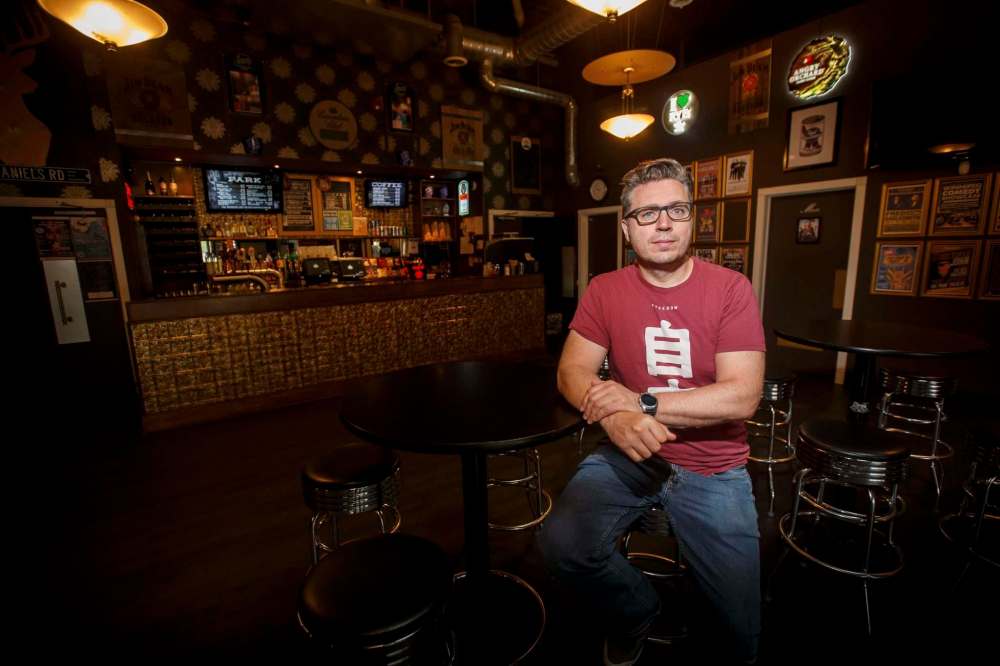
Casselman has restructured his financing so the Park Theatre can weather the pandemic-induced financial storm until 2022, when he expects the entertainment scene to return to something resembling what it was prior to the coronavirus.
A normal September would have the theatre busy almost every night of the week, but a virtual halt to touring acts has cut that number 14 or 15 shows a month, he says.
The Pyramid Cabaret reopened and has hosted concerts since early June, but manager David McKeigan says the present situation is only a stop-gap. The Fort Street venue is operating at 50 per cent capacity but fixed costs have remained the same.
“We average two shows a week and we are treading water. The property tax and business taxes will sink us,” McKeigan says. “Having a delayed payment date is helpful but it’s putting off an unpayable debt.”
The no-dancing rule the government has stipulated makes life awkward for both venue operators and audiences alike, McKeigan says.
“Demographics change and we work with a lot of (electronic dance music) DJs,” he says. “That is a dance crowd and no one is allowed to dance. So that demographic can compose half of our business.”
“That is a dance crowd and no one is allowed to dance. So that demographic can compose half of our business.”–David McKeigan
Despite McKeigan’s pandemic concerns, he continues to renovate the bar and stage at the Royal Albert Arms, which he took over in 2019. No date has been set for its reopening.
The Club Regent Event Centre, which is operated by Manitoba Liquor and Lotteries, has had to juggle almost an entire year’s worth of 2020 concerts from the spring, to the fall, and now to 2021, says Kelly Berehulka, senior entertainment buyer.
If a safe and effective COVID-19 vaccine is found, Berehulka expects the entertainment world to be eager to return to stages and audiences ready to watch and listen.
“(Next year) might shape up to be a very busy year, with everyone moving from 2020 to 2021. You’re going to have this influx of new music and new tours and artists who were waiting to tour.
"For the concert-goer, once everything gets back to the new normal, it’s going to be a busy time,” Berehulka says.
— Alan Small
Ballet, opera and orchestra
At this point in a normal year, the Royal Winnipeg Ballet would be well into rehearsals for its season opener.
This year, the company must figure out how it can rehearse amid a pandemic. As artistic director André Lewis says: “You can’t do a pas de deux six feet apart.”
In July, the company made the tough call to cancel the Canadian première of Septime Webre’s Alice (in Wonderland), which was supposed to kick off the 2020/21 season in October.
“There were just too many unknowns at the time when we made the decision, and self-isolation requirements make it difficult for people to come into Winnipeg and teach material to the company,” Lewis says.

The 2020/21 seasonis now set to begin in December with Nutcracker, followed by Swan Lake in March and The Magic Flute in April — depending, that is, on how the COVID-19 situation looks in the province.
“The challenge is the unknown right now, and of course social distancing makes it very difficult for the company to function,” Lewis says.
“The school can do some work, in the Professional Division and the Recreational Division, and they’re doing well — you can social distance and do most of the programming. You just have to do smaller classes.”
Company dancers, meanwhile, have been taking daily classes and are working on solos. Lewis hopes they can convene for rehearsals in early October.
“We’re looking at creating a series of smaller works that could be performed six feet apart, so no partnering — except for the people who are one household. There’s a few, maybe three or four couples (in the company), so you have an opportunity that way.”
Then there’s the matter of keeping performances safe. A big question mark right now is how many people the Centennial Concert Hall — the performance home base for the RWB, the Winnipeg Symphony Orchestra and Manitoba Opera — will be able to allowed to let in. Right now, the audience is capped at 500. The RWB will perform with a pared-down WSO, with roughly 25 musicians in the pit as opposed to the usual 60-plus.
Whether or not it’s worth it to put on a season under these kinds of restrictions depends on how one looks at it.
“From a financial perspective, it can be very difficult,” Lewis says. “But I want to look at it from an artistic perspective: you have to feed those dancers. They lose the ability to grow or even maintain their momentum.
“This is the reality. We have to find solutions and live with this reality of today,” Lewis says. “It’s nothing I ever expected in my 25 years as artistic director.”
“This is the reality. We have to find solutions and live with this reality of today“-André Lewis
Over at the Manitoba Opera, CEO Larry Desrochers says his organization has been pivoting to create work opportunities for established artists and educational opportunities for emerging ones over the past six months.
One such program was the Digital Emerging Artists Program, a four-week course providing everything from voice and diction instruction to financial planning for young Canadian singers who are continuing their opera education.
The MO has also been experimenting with intimate performances, such as the invite-only concert for 60 people at the St. Boniface Cathedral ruins, held in August. “The artists were so glad to have the opportunity to perform, and the audience was so happy to experience a live performance,” Desrochers says.
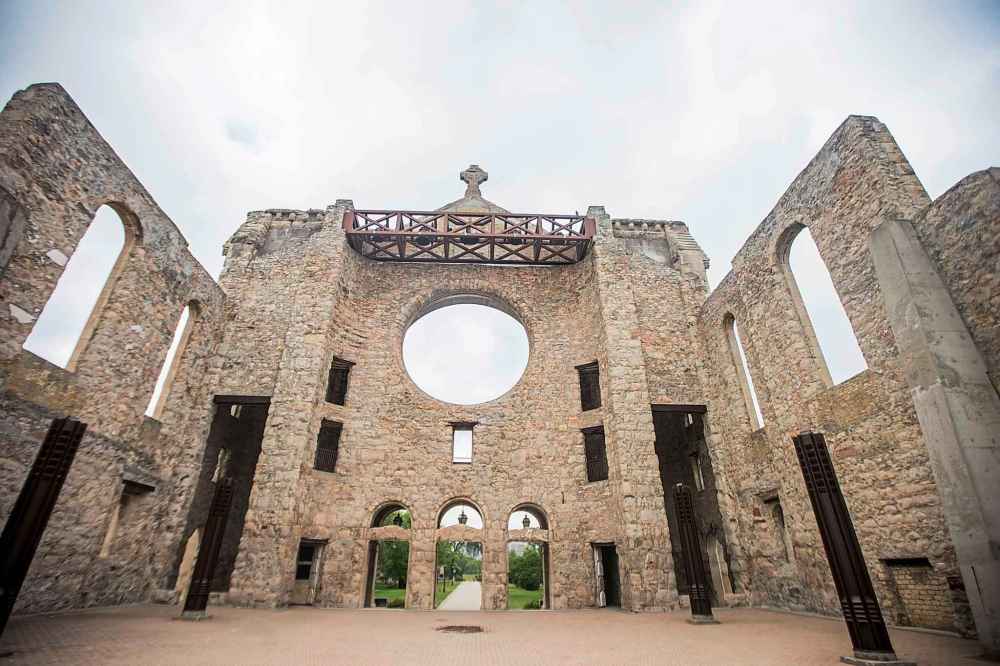
What is out right now are fully staged operas, which is why November’s season opener, Sweeney Todd, has been cancelled. Physical distancing doesn’t really allow for story operas, not to mention the fact that opera singers tend to “sing moistly,” to paraphrase Prime Minister Justin Trudeau.
And so, Manitoba Opera has replaced that show with a concert featuring solo performances by Winnipeg sopranos on Nov. 7 that will be streamed online as well as performed in front of a live, reduced-capacity audience.
The WSO, meanwhile, is committed to offering a ‘Recomposed’ 2020/21 season, says executive director Trudy Schroeder. “We’re looking at fewer items, looking at much smaller audiences. Should things remain as they are in Winnipeg, we’re looking to start our season on Oct. 2 and 3 with concerts at the concert hall that will be very much socially distanced.”
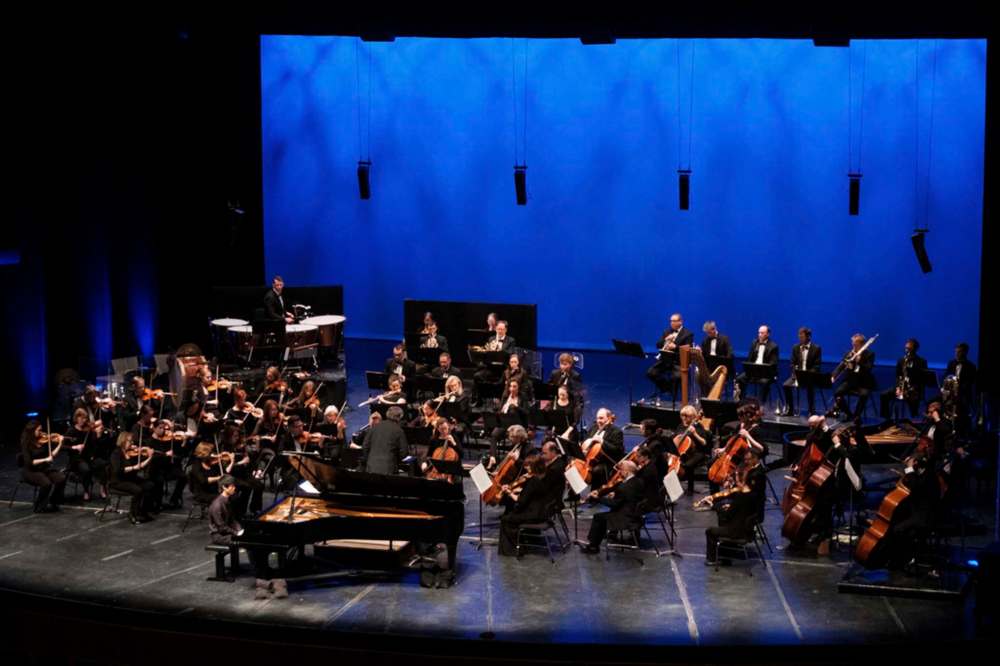
Every show in the truncated season has a Plan A, B and C, so the WSO can adapt to changing health restrictions.
“So, the largest grouping we think we can get together, a medium grouping, and a small grouping. So for every concert we have planned — so 12 Masterworks and seven Pops concerts and then the New Music Festival — it’s taken an unbelievable amount of doing to figure out the hows, the wheres, then whens and have repetoire and programming for any scenario that’s possible.”
The orchestra’s 67 members, whom Schroeder had to lay off and then was able to bring back thanks to the federal government’s wage-subsidy program, will also have to practise physical distancing. The maximum number they can have onstage and still be visible to the audience is 40, spaced. “Which poses problems of its own,” she says.
“Orchestras have to hear each other. There’s a certain amount of feeling and intuition and connection they have to have with each other in order to play together for such intricate music.”
“Orchestras have to hear each other. There’s a certain amount of feeling and intuition and connection they have to have with each other in order to play together for such intricate music.“-Trudy Schroeder
For Schroeder’s part, she misses hearing the orchestra, which hasn’t performed together in full since March.
“I really miss the music,” she says. “I find that the sound an orchestra makes when it’s tuning up for a concert is the most amazing sound of anticipation… it’s the entrance point to moments of discovery, of relaxation, of inspiration, and the pure joy of the way music can affect us.”
— Jen Zoratti
Museums and galleries
For the Manitoba Museum, the Canadian Museum for Human Rights and the Winnipeg Art Gallery, a big focus as they prepare for the fall and winter is on schools.
“We’re used to having classes come into the museum all the time on field trips,” says Maureen Fitzhenry, media relations manager at the CMHR. “But we don’t think that’s something that’s going to happen, at least not right away. So we’re actively working to put in place some virtual field trip options to help out teachers.”
“We normally host 85,000 students and our understanding from talking to teachers and school divisions is that, certainly for the short term, there aren’t going to be many, if any, on-site school field trips,” says Claudette Leclerc, CEO and executive director of the Manitoba Museum.
“So our focus is going to be and has been on pivoting and changing our educational programs to be accessible and interactive virtually.”
At the Winnipeg Art Gallery, CEO and director Stephen Borys says the focus on school programming will continue after successful summer camp programs.
The WAG reopened in May with safety protocols in place and has seen a steady rise in visitor numbers as well as sold-out summer programming for its rooftop events.
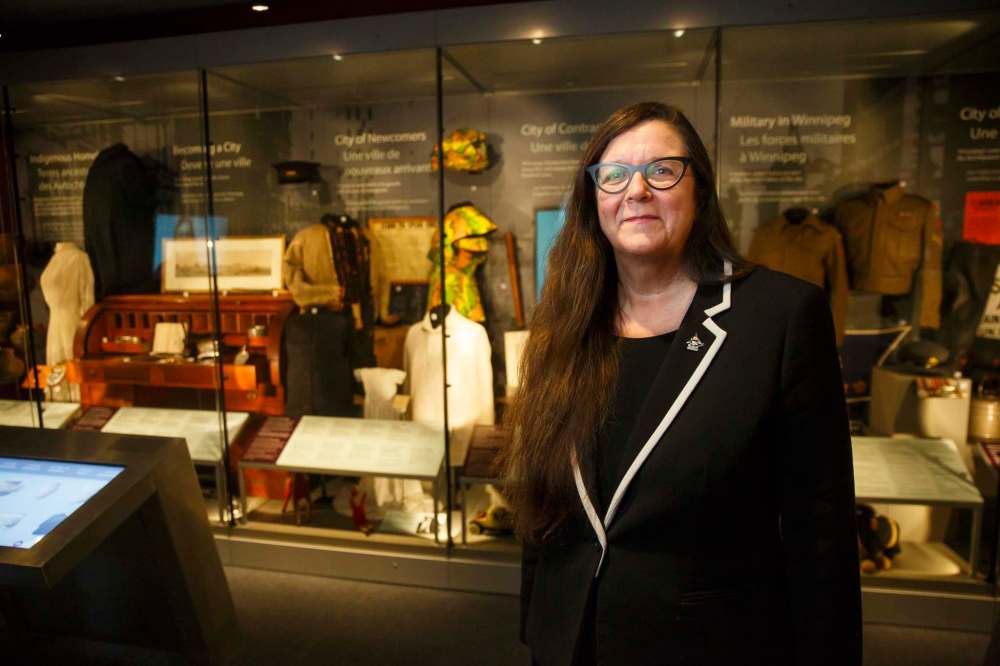
“We have 130,000 square feet spread out over four levels,” Borys says. “We have a huge, 15,000-square-foot sculpture garden outside. So, whether you’re a school group, a wedding, an event or a tourist, there are lots of spaces.”
As the WAG looks to the future, normal programming continues with Prayer, Subsist and Into the Light, a survey of work by Manitoba modernist Lionel LeMoine FitzGerald which closes Sept. 7. New exhibits opening soon include Inuk Style, In Place and Bones Beneath, while preparation continues for the opening of the Inuit Art Centre.
Meanwhile, at the Manitoba Museum, Leclerc says navigating the pandemic has been challenging because there’s no roadmap. The museum closed on March 14 and reopened on June 6, followed by the reopening of the planetarium on Aug. 13. The science gallery remains closed due to the hands-on nature of the experience.
“We’re still working through how we may be able to provide a strong science experience,” she says.
Physical distancing at the planetarium has been implemented, with assigned seating and a maximum capacity of 60 in the 250-seat space.
After renewing the Nonsuch Gallery two years ago and introducing the Winnipeg Gallery last year year, the museum is preparing for the completion of the Bringing Our Stories Forward Capital Renewal Project toward the end of November or early December, where all the museum galleries will be renewed and refreshed.
During the pandemic, the CMHR was able to open a new exhibition outdoors.
ARTiculate Our Rights opened on July 15, featuring artwork from teenage Manitoba artists scattered throughout The Forks. Each piece focuses on the youth’s vision for human rights.
“That’s a way for people who are concerned about being in indoor spaces so they can stay outside and look at an exhibition,” Fitzhenry says.
Inside the building, the Tower of Hope reopened on July 14 with limited capacity, while timed ticketing has been implemented and will continue for the foreseeable future.
“Visitation is at about probably a quarter of what it would normally be,” she says. “It has slowly increased since we first reopened on June 17 but it’s still way down.”
The museum is also stepping up its safety protocols as of Sept. 15, when masks will be mandatory inside the building.
— Frances Koncan

In a way, Randall King was born into the entertainment beat.

Frances Koncan (she/her) is a writer, theatre director, and failed musician of mixed Anishinaabe and Slovene descent. Originally from Couchiching First Nation, she is now based in Treaty 1 Territory right here in Winnipeg, Manitoba.

Alan Small has been a journalist at the Free Press for more than 22 years in a variety of roles, the latest being a reporter in the Arts and Life section.


Jen Zoratti is a Winnipeg Free Press columnist and author of the newsletter, NEXT, a weekly look towards a post-pandemic future.
Our newsroom depends on a growing audience of readers to power our journalism. If you are not a paid reader, please consider becoming a subscriber.
Our newsroom depends on its audience of readers to power our journalism. Thank you for your support.

